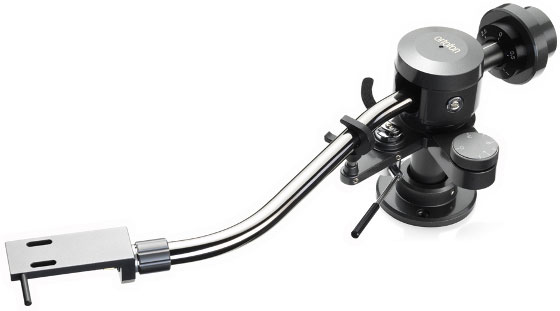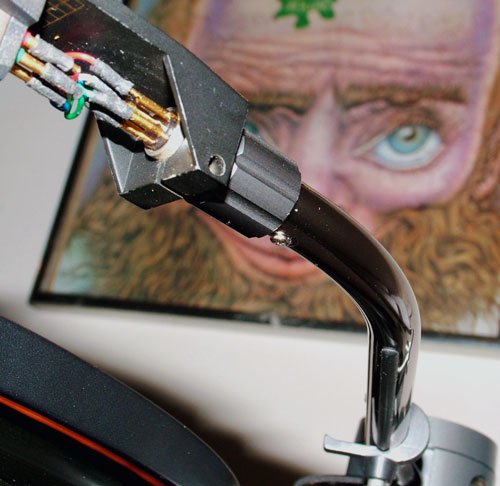Introduction
Ortofon is no newcomer to the audio industry and certainly not to vinyl playback components. In fact, their history dates back as far as 1918 as a company concerned with the development of technology for the synchronization of film and sound. In 195l, they adopted the name Ortofon A/S, a name that is derived from the Greek words “Orto”, meaning “correct,” and “Fon,” meaning “sound.” In the year of my birth, 1959, they released their first of a very long line of phono cartridges, the much revered “SPU” (Stereo Pick Up).
Over the years, Ortofon has been at the forefront of the development of technologies and designs in phono cartridges as well as tonearms. In fact, even the famed designer Hisayoshi Nakatsuka (ZYX), worked at Ortofon for a time where he patented the use of a square magnetic armature for cartridge motor assembly that is prominently used today.
Currently, Ortofon is a leader in the development of technical rubber and its application in acoustics, and micro mechanical assemblies such as bone conductors used in hearing aid technology. This field is obviously also well-suited for the development of cartridge stylus suspensions and assemblies and tonearms. As such, Ortofon continues their tradition in the audio industry as a developer and marketer of record playback equipment in the professional studio and DJ world, as well the consumer market.
Their latest tonearm series premiered this past year, which includes the 12-inch TA-210 and the 9-inch TA-110, the subject of this review.
As I mentioned in the review of the Merrill–Williams R.E.A.L. 101 turntable, I happened upon this tonearm by way of a recommendation from George Merrill. As a result, I arranged for a review of the TA-110 with Ortofon USA and Mr. Merrill pre-installed the tonearm base to the custom tonearm board that was machined specifically for this tonearm’s mount.
Tonearm reviews are a very tricky endeavor. The purpose of the tonearm is to carry the phono cartridge, an energy transducer, and sweep it through an arc, thus enabling the stylus to trace the record groove accurately. The tonearm needs to do so with as little interference as possible. As such, the tonearm must possess a pivot bearing of very low lateral and vertical friction, it must also be of sufficient mass to enable the phono cartridge to exert enough downward force to play the record groove as dictated by the cartridge manufacturer, at the same time not influencing the sound produced by the phono cartridge by introducing mechanical energy of its own. So really, a well-designed tonearm should yield a true and honest playback of the sonic qualities of the phono cartridge, good or bad. This all sounds too easy, doesn’t it? That’s why we have a raft of tonearms being developed and offered all over the world, each of them with their own unique take on what an optimal tonearm should be.
Installation and Set-up
The TA110’s base came to me pre-installed and the mount is a very standard “Linn-style” base which is quite common. It had been quite a while since I had the luxury of installing a tonearm without the cartridge and then installing the cartridge to the separate head shell. I can already hear the audiophile purists out there bemoaning the “broken” connection of the wire and the addition of two contact points in the sensitive tonearm wire, as well as the “loss” of rigidity and “threat” of unwanted vibration due to the bayonet assembly to screw in the headshell; but hey, I’m describing the tonearm here, not the sound! You should probably read on and not pre-judge. The effective mass of the 9” tonearm is a scant 3.5 grams without the headshell. As such, you can optimize the tonearm for mating with the cartridge of your choice by strategically choosing from the veritable army of headshells of varying lengths and masses that are available from Ortofon. The model LH-2000E headshell, weighing in at 15.5 grams, comes standard with the Ortofon TA-110.
Also of note is the fact that the Ortofon TA-110 comes equipped with a very high quality and rather stiff tonearm cable from their line, the 6NX-TSW-1010, which sports an OFC copper coil, and gold-plated RCA’s with the center signal pins plated with Rhodium. The 5-pin DIN connector is also Rhodium plated. This is a nice touch for a modestly-priced, $1,599 MSRP tonearm.
Let’s get this one fact out of the way before I go any further into the tonearm’s description: For you analog junkies with a sharp eye for tonearms, it is no accident that the Ortofon TA-110 bears a very strong resemblance to a tonearm from the JELCO arsenal. JELCO is the largest OEM manufacturer of tonearms in the world. As such, they build customized tonearms for engineering firms that do not have the extensive manufacturing capacity, nor expertise to fully realize their designs end-to-end in-house. In terms of the high-end, ”JELCO-built tonearms that are manufactured as specified by the designers have carried such high-end staple trade names as Graham Engineering (The Robin), Koetsu, Dr. Feickert, Grado Labs, Audioquest, and Ortofon – the list is quite extensive. It is also important to note that the tonearms bearing their resemblance and sold under the OEM name JELCO does not at all make them equals to their customized and patented high-end cousins.
Getting back to installation and set-up, VTA is set by loosening a retaining screw that holds the tonearm vertical tube in place, then sliding the tonearm bearing assembly up and down. This was a very frustrating task for me since for the past 30 years with precious few gaps in those years, I have had the luxury of being able to dial-in the VTA while playing a record and optimizing for varying record thicknesses and doing so along a scale with millimeter markings that ensure that results are repeatable, once set. Such is not the case with the Ortofon TA-110. To be fair, precious few tonearms in today’s market have such capability, regardless of cost consideration. The TA-110 also does not offer any way of adjusting stylus azimuth. I realize of course this is not a feature that is at all common to find in a tonearm of this price range. Absent the azimuth adjustment, optimization is left to the perfection of the geometry of platter and tonearm relationship, as well as the “trueness” of the cartridge cantilever and stylus assembly. Any adjustment would need to be accomplished with shims between the cartridge and headshell. So then, what is special about the Ortofon TA-110?
The Sound
The answer to that question can be summarized with one word: rubber. That’s right, the “special sauce” behind the genius of the Merrill-Williams design has managed to make an appearance into a tonearm.
In the case of the TA-110 tonearm, Ortofon leverages their mighty prowess in R&D in the area of technical rubber for the hearing aid industry and applies it to tonearm technology. Using computer-aided design and their acoustical design engineering principles developed for other industries, Ortofon was able to design and manufacture a rubber insert that when placed precisely where indicated by their modeling, yields a low-mass, highly rigid, and essentially inert tonearm pipe. There is an Ortofon video that is published on their website, as well as on YouTube, that illustrates the dramatic difference between the stock tonearm pipe and their rubber-optimized tonearm pipe (http://www.youtube.com/watch?v=LsRgKX5Tg1U ). This , in theory, makes the Ortofon tonearm non-resonant, and since the rubber is placed along the tube, it also ensures that any resonant energy conveying back from the headshell or cartridge body is suppressed. This is a seemingly simple and elegant solution to a problem that confounds all tonearms in one way, shape, or form.
So then how does all of this translate to the sound of the whole? In a word, invisibly.
That’s right, the Ortofon TA-110 pulls a complete disappearing act. In a sense, it allows for the true personality of the phono cartridge to emerge from the speakers without adding any sonic character of its own. This means that my ZYX Omega-S, Accuphase AC2, and Accuphase AC3, each demonstrated their subtle nuances in the way they reproduce upper-bass, midrange, and depth of field, that is easily masked by lesser tonearm/turntable combinations. It also means that my Technics 305C moving coil was able to portray its unique sense of emotion, warmth, and intoxicatingly expressive midrange from that same tonearm. It also means that the Technics 205Cmk3 phono cartridge was able to rock the house with its explosive dynamics and velvety smooth midrange and highs. Not bad for a $1,599 tonearm!
To Summarize
The tonearm’s job is to carry the cartridge and allow it to track the vinyl accurately without adding any sonic character of its own. In my view, the Ortofon TA-110 does so without breaking a sweat. I personally would love to see Ortofon take this tonearm as its staple design platform and come up with a more fully adjustable version that allows for the all-important azimuth adjustment, and one that facilitates easy and repeatable VTA adjustments. At $1,599, this is certainly a minor quibble. For the vast majority of users, these things are a non-issue. These adjustments are a set-it-and-forget-affair for as long as you use a single cartridge. Teaming up this excellent tonearm with the superb Merrill-Williams turntable makes a compelling and powerful statement in terms of a true turn-key, superb sounding vinyl playback system. Congratulations to Ortofon for developing this elegant solution and translating it to a tonearm that is truly universal in application. The TA-110 is a runaway must-have at this price and a serious contender at several times the price.
- (Page 1 of 1)




Not so much a comment as a question. I am currently using a Graham 1.5T and I have an Ortofon Cadenza Bronze Cartridge. They are as I’m sure you know, not a good match. The cartridge is far too heavy for the Graham which is a shame because both are fine examples of their respective uses. I am considering an Ortofon TA110 which I suspect would be a great match for the Cadenza Bronze. Currently, I have reinstalled my Benz Glider cartridge in the Graham which works great. I am currently using a Star Sapphire with vacuum platter and electronic flywheel. Any suggestions?